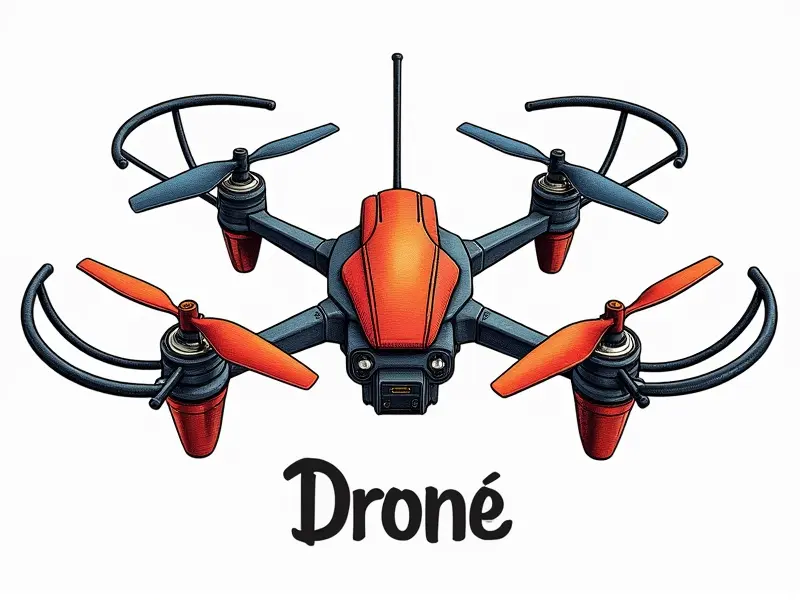How to calibrate drone sensors?

Quick Guide: Calibrating Drone Sensors Easily
Calibrating your drone's sensors is a crucial step in ensuring optimal performance and accuracy. This guide provides a straightforward approach to calibrating the essential sensors on your drone, including GPS, compass, barometer, and accelerometer.
Mastering Drone Sensor Calibration in Minutes
To master the art of calibrating drone sensors quickly, follow these steps:
- GPS Calibration: Ensure your drone has a clear view of the sky to receive satellite signals. Place it on a flat surface and wait for GPS lock.
- Compass Calibration: Move your drone in a figure-eight pattern to eliminate magnetic interference from nearby objects or electronic devices.
- Barometer Calibration: This sensor measures altitude, so calibrate it by placing the drone on a stable surface at ground level.
Fast Track Your Drone's Sensor Accuracy
Improving your drone’s sensor accuracy can significantly enhance its flight stability and performance. Here are some tips:
- Regular Calibration: Perform calibration checks regularly to maintain optimal sensor readings.
- Avoid Interference: Keep the drone away from metal objects, magnets, or other electronic devices that may cause interference with sensors.
Simplified Drone Sensor Calibration Process
The calibration process can be simplified by following these steps:
- GPS: Ensure the drone is in an open area and wait for GPS lock.
- Compass: Perform a figure-eight pattern to recalibrate the compass.
- Barometer: Place the drone on a flat surface at ground level for accurate altitude readings.
Achieving Precision with Drone Sensor Tuning
Tuning your drone’s sensors is vital for achieving high precision in flight. Here are some advanced tips:
- Use Calibration Software: Some drones come with software that can help fine-tune sensor settings.
- Check Sensor Health: Regularly inspect and clean sensors to ensure they function correctly without dust or debris buildup.
Essential Tips for Perfect Drone Sensor Setup
To set up your drone’s sensors perfectly, consider the following tips:
- Environmentally Controlled Calibration: Perform calibration in a stable environment to avoid external factors affecting sensor readings.
- User Manual Review: Refer to the user manual for specific instructions tailored to your drone model.
Beginner's Guide to Drone Sensor Calibration
If you're new to drones, understanding how to calibrate sensors is essential. Here’s a beginner-friendly guide:
- Familiarize Yourself with Sensors: Learn about the different types of sensors your drone has and their functions.
- Follow Manufacturer Instructions: Each manufacturer may have unique calibration procedures, so follow the instructions provided.
Optimize Your Drone: Easy Sensor Calibration
Calibrating your drone’s sensors can optimize its performance and extend battery life. Here are some easy steps to follow:
- Regular Maintenance: Regularly clean and inspect sensors for any signs of wear or damage.
- Update Firmware: Keep the firmware updated to ensure compatibility with new sensor technologies.
Step-by-Step Sensor Calibration for Drones
Calibrating your drone’s sensors step-by-step ensures thorough accuracy. Follow these detailed instructions:
- GPS Lock: Place the drone in an open area and wait until GPS signals are locked.
- Compass Adjustment: Move the drone in a figure-eight pattern to recalibrate the compass.
- Barometer Setup: Ensure the barometer is calibrated by placing it on a flat surface at ground level.
Quick Fixes: Calibrating Drone Sensors Correctly
If you encounter issues during calibration, here are some quick fixes to try:
- Restart the Drone: Sometimes simply restarting the drone can resolve minor calibration errors.
- Check for Interference: Ensure there is no magnetic or electronic interference affecting sensor readings.
Achieving Precision in Drone Calibration
To achieve precision in your drone’s calibration, follow these best practices:
- Detailed Documentation: Keep detailed records of each calibration session for future reference.
- Professional Assistance: If you’re unsure about a particular step, consult with an expert or reach out to the manufacturer’s support team.
Conclusion
Calibrating your drone's sensors is essential for ensuring optimal performance and accuracy. By following these detailed guides and tips, you can easily calibrate your drone’s GPS, compass, barometer, and accelerometer with confidence. Regular calibration checks will help maintain high precision in flight operations, enhancing both safety and efficiency.

